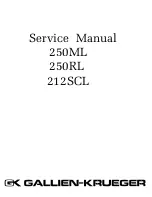
Chapter 2 — The pH/mV Amp
13
used, while the 200 or 100 mV settings are suited to narrow range pH
measurements (for example for biological pH monitoring).
Filtering
Low pass filter settings of 10, 5, 2 and 1 Hz are available. The low
pass filter will remove high frequency noise. pH and ion selective
electrodes have a slow response time, usually in the order of seconds,
and the 1 Hz filter setting is often routinely used. If you are using fast
response electrodes then a higher setting can be used.
The Mains Filter,
, removes 50 or 60 Hz interference due to
mains hum. See the
Chart Software Manual
for more information. For
most applications it is recommended to have the Mains Filter on.
Inverting the Signal
Ticking the Invert checkbox,
, reverses signal polarity (that is
positive and negative signal values are reversed).
Units Calibration
Clicking the
button access the Units Conversion dialog box.
For more information about Units Conversion, see the
Chart Software
Manual
or
Scope Software Manual.
However, when using Chart software for recording data from pH and
ion selective electrodes, and where single or double point calibration is
employed, use the pH Calibration extension, see
Chapter 3
— do NOT
use Units Conversion.
Where multiple point calibration (more than two points) is required, use
the Multiple Point Calibration extension.
Both the pH Calibration extension and Multiple Point Calibration
extensions can be obtained from the eDAQ website (www.eDAQ.com).
Содержание EA168
Страница 4: ...iv Quad pH mV Amp ...
Страница 8: ...4 Quad pH mV Amp ...
Страница 18: ...14 Quad pH mV Amp ...
Страница 34: ...30 Quad pH mV Amp ...
















































